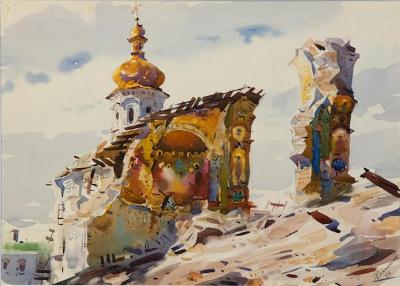
Revolutions and Councils: 1917-18
Thursday, Oct. 25, 2018
Loyola Marymount University
The American journalist John Reed was an eyewitness of the Bolshevik revolution on October 25, 1917 and provided in his book Ten Days That Shook the World an enthusiastic account of it. Reed, however, sidelined another Russian revolution, which happened in February of the same year. The February revolution discontinued monarchy and established the Russian republic, which lived eight months only and continues to be an unattainable model of the Russian democracy.
The February revolution made possible the liberation of the Russian Orthodox church, which was eventually able to convene its great council. The Moscow council 1917-1918 set up an all-embracing program of aggiornamento and in this sense preceded the Vatican II. It also gave a chance to the ecclesiastical renaissance in the provinces of the former empire, such as Ukraine. The October revolution, however, which established the dictatorship of the proletarian class and adopted official atheism, curtailed both the aggiornamento of the Russian church and the renaissance of the new nations that emerged from the empire.
This 2018 Huffington Ecumenical Symposium focused on both Russian revolutions, their impact on the societies and churches of the former empire, and the clues that they provide for the recent developments in Russia and its church.
Schedule
1 p.m. | Inauguration of Painting Exhibition by Soviet artist Yuriy Khymych
Marymount Institute
2 p.m. | Presentations & Coffee
Ahmanson Auditorium
Antoine Arjakovsky, Collège des Bernardins, Paris
Scott Kenworthy, Miami University, Oxford, OH
Frank Sysyn, University of Alberta, Edmonton, Canada
5 p.m. | Response & Panel Discussion
Ahmanson Auditorium
Nigel Raab, Loyola Marymount University
6 p.m. | Reception
The Atrium